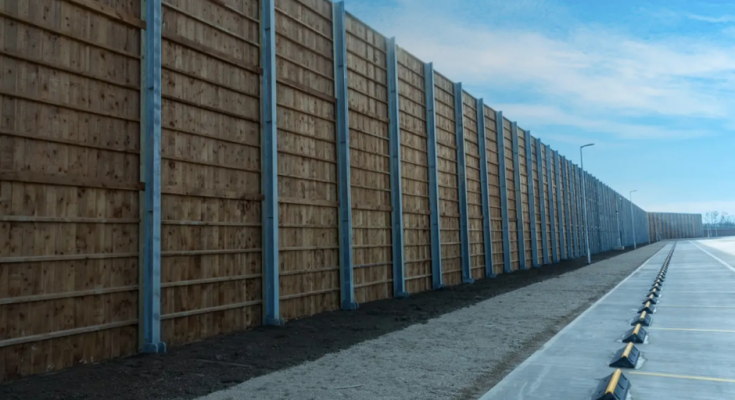When it comes to securing a construction site or any public-facing project, the type of barrier used plays a crucial role in ensuring safety and compliance. Both fencing hoarding and traditional fencing serve the same basic function, marking boundaries and preventing unauthorised access. However, each comes with distinct advantages that make one more suitable for certain projects than the other.
In this article, we will explore the key differences and how selecting the right option can influence the outcome of your project.
What Is Fencing Hoarding?
Fencing hoarding refers to solid barriers that are engineered to meet high safety and compliance standards. Unlike traditional fences, it is often used for more high-risk or visible sites, where both security and aesthetics are important.
These barriers are typically modular, freestanding, and designed for easy assembly without the need to attach them to existing structures. They can also be fully customised for branding, signage, and specific project needs.
Key features include:
- Solid, opaque panels that provide better security and dust control
- Modular, flexible designs that are easy to adjust as the project evolves
- Engineer certification to meet safety standards like AS 4687:2022
- Capability to withstand higher winds and environmental stress
Understanding Traditional Fencing
Traditional fencing, on the other hand, is a more conventional solution, often made of chain-link or mesh materials. It is typically installed with posts that are either set into the ground or secured with weights.
While effective in creating boundaries, traditional fencing is less robust in terms of visual appeal and overall security.
Characteristics of traditional fencing include:
- Open, mesh-style construction that allows visibility through the barrier
- Easier installation and generally lower upfront cost
- Less durable in extreme weather conditions or high-risk environments
- Can be seen as unsightly in public-facing areas
Key Differences Between Fencing Hoarding and Traditional Fencing
To better understand which option is right for your project, here’s a breakdown of the main differences:
| Feature | Fencing Hoarding | Traditional Fencing |
| Visual Barrier | ✔ Opaque, solid panels | ✘ Open, mesh-style |
| Safety and Compliance | ✔ High standards, engineer-certified | ✘ Basic standards |
| Installation | ✔ Quick, freestanding | ✔ Quick, but with ground penetration |
| Durability | ✔ High resistance to weather | ✘ Less durable in harsh conditions |
| Versatility | ✔ Highly adaptable (branding, signage) | ✘ Limited to basic functionality |
Benefits of Fencing Hoarding
The advantages of fencing hoarding are particularly evident in high-profile, high-risk projects. Here are the key benefits:
1. Enhanced Safety and Security
Unlike traditional fencing, fencing hoarding offers a more secure barrier, providing better protection for workers, equipment, and the public. The solid panels prevent unauthorised access and offer protection against dust, debris, and other construction hazards.
2. Improved Aesthetics
In areas where aesthetics matter, such as retail or urban environments, fencing hoarding provides a more professional and polished appearance.
The solid, clean panels contribute to a better visual image, which is particularly important when the site is in a high-traffic area.
3. Superior Durability
It is designed to withstand harsh weather conditions, including high winds, making it a more reliable option for sites exposed to the elements.
This durability ensures the barrier remains intact and functional throughout the duration of the project.
4. Flexibility and Customisation
One of the greatest advantages is its modular design. Panels can be rearranged, added, or removed based on the evolving needs of the project.
This level of flexibility is ideal for long-term or large-scale projects, where the barriers may need to be adjusted as construction progresses.
5. Compliance with Regulations
Fencing hoarding systems are engineered to meet rigorous safety standards, ensuring that projects comply with local regulations, such as AS 4687:2022 in Australia. This is a significant advantage over traditional fencing, which may not always meet these stringent requirements.
While traditional fencing can be a cost-effective solution for short-term or low-risk sites, fencing hoarding offers superior security, durability, and compliance for more demanding environments. Its versatility, aesthetic appeal, and capacity to meet safety standards make it the ideal choice for construction sites, high-traffic areas, and projects requiring long-term solutions.




